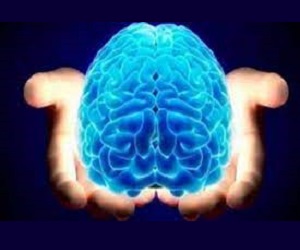 The accelerated development of neuroimaging has made it possible to deepen our knowledge of each specific area of the brain. Photo: Courtesy of the interviewee
The accelerated development of neuroimaging has made it possible to deepen our knowledge of each specific area of the brain. Photo: Courtesy of the interviewee
Brain mapping projects began in the 1990s with the mission of deepening knowledge of the anatomy and functions of the brain with the use of high-performance neuroimaging equipment, including nuclear magnetic resonance and computerized axial tomography.
In undertaking such promising research, neuroscientists sought to better understand the role played by each of the structures of the most complex organ in the human body, how they participate in the work of the brain as a whole, the behavior of neuronal interconnections and other enigmas yet to be revealed, in order to advance in the early diagnosis of neurological and psychiatric disease, to achieve more effective treatments.
To learn about the state of studies on the subject at the international level and what Cuba has done in this field, Granma reached out to Doctor of Science Pedro Valdés Sosa, researcher at the Center for Neurosciences of Cuba, head of the Cuban Brain Mapping Project and director of the China-Cuba Joint Neurotechnology Laboratory created in July 2015 and based in the city of Chengdu.
-What features distinguish brain mapping projects and what are the most relevant findings?
-In brain research today, practically all sciences converge, from molecular biology, genetics, bioinformatics, mathematics, physics and neurosciences in general to psychological and social studies.
The main feature of the global projects is the spatial mapping of the organ in all its aspects, which include, for example, epigenetics, proteomics, blood flow, and electrical and magnetic activity.
Thanks to the vertiginous advance of technology in neuroimaging, it is now possible to make brain maps in three dimensions.
These can vary over time, from one milliseconds to another, or last a lifetime.
Based on the development of another currently prominent branch of science, neuroinformatics, databases are created from neuro-images and other data, the processing and analysis of which have become vital to the work of researchers.
Given that gene and pharmacological therapies cannot completely eliminate the disabling motor effects of cerebrovascular accidents and other events, neurosciences are opening new perspectives to improve the quality of life of persons with these limitations, putting solutions within the reach of medicine that were once conceived only in the realm of science fiction, like the creation of bionic organs, electronic devices capable of inter-acting with the nervous system, etc.
Among the main results of brain mapping projects, which have reached an unprecedented level of detail, is the creation of the most accurate brain map of the motor cortex, linked to movement, by the Allen Institute, in the United States.
Plus, the reconstruction of the brain of a deceased woman, in a computer with a resolution of 20 microns, made by the scientist
Alan Evans of the Montreal Neurological Institute, Canada,
and Katrin Amunts, scientific director of the European Brain Project.
This atlas is known as the Big Brain, which is enriched with data from multiple sources, a project in which Cuba and the Chinese-Cuban Joint Laboratory are actively collaborating.
I must emphasize that the totality of the data obtained by the different brain mapping projects are openly shared, as part of the Open Science movement, accompanied with the Free Software movement. These resources are vital for Public Health and the development of biotechnology.”
-How is the Cuban brain mapping project going?
-Cuba was among the first nations in which scientists conducted a brain mapping project, in the1990s, but only with the use of electro-encephalograms.
We then undertook a second phase in 2004, in which we incorporated magnetic resonance imaging.
In 2019 we became the only nation to have a governmental National Science and Technology Program on the brain.
Our project maintains strong links of exchange and collaboration with the rest of the brain mapping projects currently underway in the world. In certain areas, our work is recognized by the international community in this field.
Some of the relevant contributions include having managed to characterize the cortical thickness and brain connections of the typical Cuban, for an age range of 15 to 60 years of age, information used in the study of patients with epilepsy, language disorders, violent behaviors, schizophrenia and several neuropsychiatric and neurodegenerative diseases.”
-What results has the China-Cuba Joint Laboratory of Neurotechnology produced?
-The Laboratory’s research has contributed significantly to global brain mapping projects, and was the subject of more than 60 scientific articles published in impact journals such as Nature
Scientific Data, and most recently in the National Science Review, addressing the effects of covid-19 on the brain, and as part of a collaboration that led to a recent article in Nature.
Under the Laboratory’s guidance, a high-performance computing node was created for the processing of neuroinformatics data from the collaborative project between Cuba, China and Canada, related to the early detection of neurological ailments and the management of brain aging, the establishment of an academic station for Precision Medicine, in which five Academians of Merit from the Cuban Academy of Sciences are participating.”
(Taken from Granma)